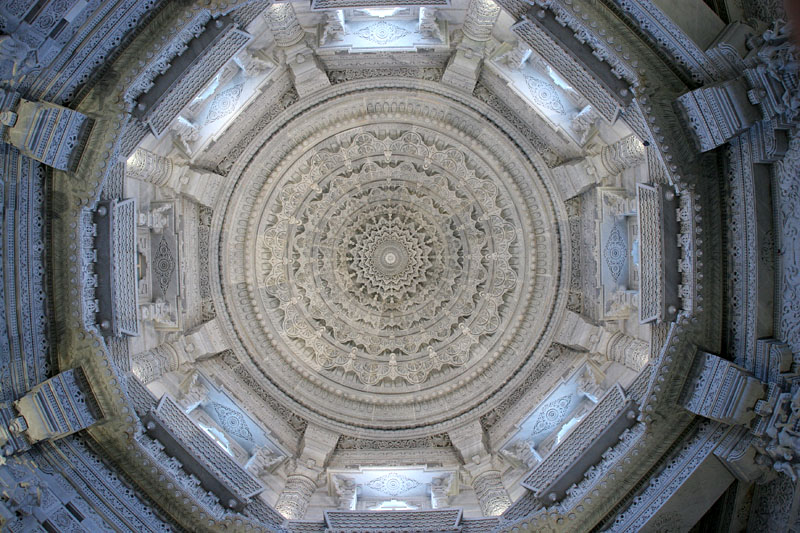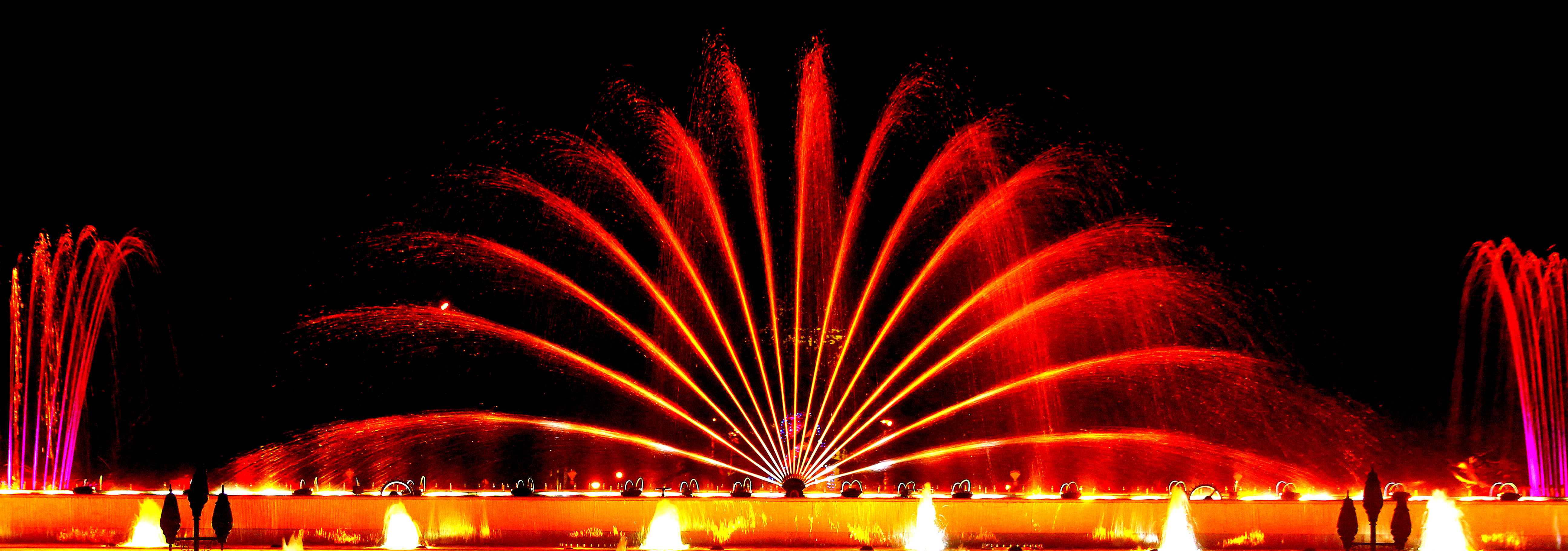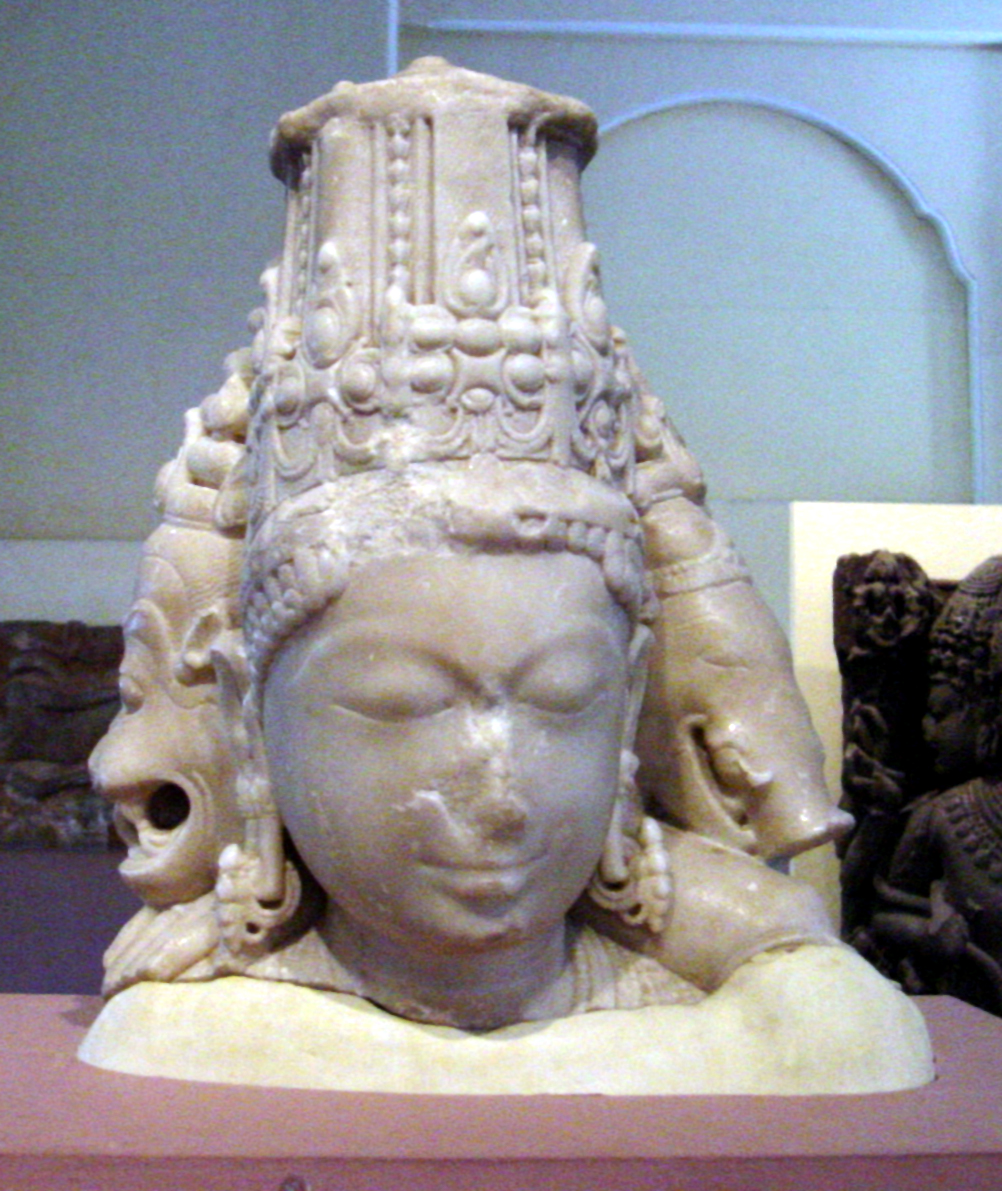|
Swaminarayan Akshardham (New Delhi)
Swaminarayan Akshardham is a Hindu temple and spiritual-cultural campus in Delhi, India. The temple is close to the border with Noida. Also referred to as Akshardham Temple or Akshardham Delhi, the complex displays millennia of traditional and modern Hindu culture, spirituality, and architecture. Inspired by Yogiji Maharaj and created by Pramukh Swami Maharaj, it was constructed by BAPS. It is the world's second-largest BAPS Hindu temple, following Akshardham, New Jersey, in the United States. The temple was officially opened on 6 November 2005 by Pramukh Swami Maharaj in the presence of A. P. J. Abdul Kalam, Manmohan Singh, L.K Advani and B.L Joshi. The temple, at the centre of the complex, was built according to the ''Vastu shastra'' and '' Pancharatra shastra''. In Swaminarayan Akshardham, similar to its predecessor Swaminarayan Akshardham in Gandhinagar, Gujarat, the main shrine is the focal point and maintains the central position of the entire complex. There are va ... [...More Info...] [...Related Items...] OR: [Wikipedia] [Google] [Baidu] |
Delhi
Delhi, officially the National Capital Territory (NCT) of Delhi, is a city and a union territory of India containing New Delhi, the capital of India. Straddling the Yamuna river, but spread chiefly to the west, or beyond its Bank (geography), right bank, Delhi shares borders with the state of Uttar Pradesh in the east and with the state of Haryana in the remaining directions. Delhi became a union territory on 1 November 1956 and the NCT in 1995. The NCT covers an area of . According to the 2011 census, Delhi's city proper population was over 11 million, while the NCT's population was about 16.8 million. The topography of the medieval fort Purana Qila on the banks of the river Yamuna matches the literary description of the citadel Indraprastha in the Sanskrit epic ''Mahabharata''; however, excavations in the area have revealed no signs of an ancient built environment. From the early 13th century until the mid-19th century, Delhi was the capital of two major empires, ... [...More Info...] [...Related Items...] OR: [Wikipedia] [Google] [Baidu] |
Noida
Noida (), short for New Okhla Industrial Development Authority (ISO: ), is a city located in Gautam Buddha Nagar district of the Indian state of Uttar Pradesh. As per provisional reports of Census of India, the population of Noida in 2011 was 642,381. The city is managed by New Okhla Industrial Development Authority (NOIDA). The district's administrative headquarters are in the nearby city of Greater Noida. The city is a part of the Noida (Vidhan Sabha) constituency and Gautam Buddha Nagar (Lok Sabha) constituency. Noida was ranked as the "Best City in Uttar Pradesh" in the "Best City Awards" conducted by ABP News in 2015. It is also ranked the cleanest city in medium category cities (cities with a population of 300,000 to 1,000,000) and 4th cleanest city among cities with less than 1,000,000 people. History The city lies in the cultural region of Braj. Noida came into administrative existence on 17 April 1976 and celebrates 17 April as "Noida Day". It was set up as part ... [...More Info...] [...Related Items...] OR: [Wikipedia] [Google] [Baidu] |
Swaminarayan (spiritual Tradition)
The Swaminarayan Sampradaya, also known as Swaminarayan Hinduism and Swaminarayan movement, is a Hinduism, Hindu Vaishnava sampradaya rooted in Ramanuja's Vishishtadvaita, characterized by the Bhakti, worship of its Charismatic authority, charismatic founder Sahajanand Swami, better known as Swaminarayan (1781–1830), whom many regard as an avatar of Krishna or as the highest Theophany, manifestation of Purushottama, Purushottam, the supreme God. According to the tradition's lore, both the religious group and Sahajanand Swami became known as ''Swaminarayan'' after the Swaminarayan mantra, which is a compound of two Sanskrit words, swami ("master, lord") and Narayana, Narayan (supreme God, Vishnu). During his lifetime, Swaminarayan Institutionalisation, institutionalized his charisma and beliefs in various ways. He constructed six mandirs to facilitate followers' devotional worship of God, and encouraged the creation of a scriptural tradition''.'' In 1826, in a legal documen ... [...More Info...] [...Related Items...] OR: [Wikipedia] [Google] [Baidu] |
Musical Fountain
A musical fountain, also known as a fairy fountain, prismatic fountain or dancing fountain, is a type of choreographed fountain that creates aesthetic designs as a form of entertainment. The displays are commonly synchronised to music and also feature lighting effects that are refracted and reflected by the moving water. Contemporary multimedia fountains can include lasers, video projection and three-dimensional imagery. Installations can be large scale, employing hundreds of water jets and lights, and costing into the millions of dollars. Techniques tend to be complex, and require mechanical, hydraulic, electrical, and electronic components that are usually kept out of view. Fountains that are choreographed to music The earliest musical fountains were played manually by a live operator, who usually controlled pumps or valves and sometimes lights by way of switches on a control panel. Music was almost always live. Later, choreography could be prerecorded on a punched paper car ... [...More Info...] [...Related Items...] OR: [Wikipedia] [Google] [Baidu] |
Abhisheka
Abhisheka () is a religious rite or method of prayer in which a devotee pours a liquid offering on an image or murti of a deity. This is common to religions such as Hinduism, Buddhism and Jainism. Hinduism An abhiṣeka is conducted by priests by bathing the image of the deity being worshipped, amidst the chanting of mantras. Usually, offerings such as milk, yogurt, ghee, honey, panchamrita, sesame oil, rose water, sandalwood paste may be poured among other offerings depending on the type of abhishekam being performed. This rite is routinely performed in Hindu temples. A '' Rudrābhiṣeka'' or abhiṣeka of Rudra is performed on lingams. A Kumbhabhishekam is a consecration ritual for a Hindu temple. Buddhism Tibetan Buddhism In Vajrayana Buddhism or Mantrayana Buddhism, one enters into the path of Vajrayana Buddhism by receiving the four stages of tantric empowerments, or abhisheka: the vase abhisheka, secret abhisheka, prajnajnana abhisheka, and word abhisheka. In Vaj ... [...More Info...] [...Related Items...] OR: [Wikipedia] [Google] [Baidu] |
Gujarat
Gujarat () is a States of India, state along the Western India, western coast of India. Its coastline of about is the longest in the country, most of which lies on the Kathiawar peninsula. Gujarat is the List of states and union territories of India by area, fifth-largest Indian state by area, covering some ; and the List of states and union territories of India by population, ninth-most populous state, with a population of 60.4 million in 2011. It is bordered by Rajasthan to the northeast, Dadra and Nagar Haveli and Daman and Diu to the south, Maharashtra to the southeast, Madhya Pradesh to the east, and the Arabian Sea and the Pakistani province of Sindh to the west. Gujarat's capital city is Gandhinagar, while its largest city is Ahmedabad. The Gujarati people, Gujaratis are indigenous to the state and their language, Gujarati language, Gujarati, is the state's official language. The state List of Indus Valley civilisation sites#List of Indus Valley sites discovered, ... [...More Info...] [...Related Items...] OR: [Wikipedia] [Google] [Baidu] |
Gandhinagar
Gandhinagar () is the capital of the state of Gujarat in India. Gandhinagar is located approximately 23 km north of Ahmedabad, on the west central point of the industrial corridor between the megacities of Delhi and Mumbai. Gandhinagar lies on the west bank of the Sabarmati River, about 545 km (338 miles) north of Mumbai and 901 km (560 miles) southwest of Delhi. The Akshardham temple is located in Gandhinagar. There was a determination to make Gandhinagar a purely Indian enterprise, partly because the state of Gujarat was the birthplace of Mahatma Gandhi. For this reason, the planning was done by two Indian town planners: Prakash M Apte and H. K. Mewada, who had apprenticed with Le Corbusier in Chandigarh. Etymology The name of the city means "Gandhi's city" and it is named after Mahatma Gandhi. History The city was planned by Chief Architect H.K. Mewada, a Cornell University graduate, and his assistant Prakash M Apte. It was developed in the 1960s. Demo ... [...More Info...] [...Related Items...] OR: [Wikipedia] [Google] [Baidu] |
Swaminarayan Akshardham (Gandhinagar)
Swaminarayan Akshardham in Gandhinagar, Gujarat, India is a large Hindu temple complex inspired by Yogiji Maharaj (1892–1971) the fourth spiritual successor of Swaminarayan, and created by Pramukh Swami Maharaj (1921–2016), the fifth spiritual successor of Swaminarayan according to the BAPS denomination of Swaminarayan Hinduism. Located in the capital of Gujarat, the complex was built over 13 years and is a tribute to Swaminarayan and his life and teachings. At the center of the 23-acre complex is the Akshardham mandir, which is built from 6,000 metric tons of pink sandstone from Rajasthan. The complex's name refers to the divine abode of Swaminarayan in the BAPS philosophy; followers of Swaminarayan believe that the jiva or soul goes to Akshardham after attaining moksha, or liberation. BAPS followers worship Swaminarayan as God almighty. Akshardham Mandir The focal point of the complex is the Akshardham Temple, which measures 108 feet high, 131 feet wide and 240 feet lo ... [...More Info...] [...Related Items...] OR: [Wikipedia] [Google] [Baidu] |
Pancharatra
''Pancharatra'' (IAST: ''Pāñcarātra'') was a religious movement in Hinduism that originated in late 3rd-century BCE around the ideas of Narayana and the various avatar and forms of Vishnu as their central deities.Pancharatra: religious movement , Encyclopaedia Britannica The movement later merged with the ancient Bhagavata tradition and contributed to the development of . The Pancharatra movement created numerous literary treatises in Sanskrit called the ''Pancharatra Samhitas'', and these have been influential Agamic texts wit ... [...More Info...] [...Related Items...] OR: [Wikipedia] [Google] [Baidu] |
Vastu Shastra
Originating in ancient India, ''Vastu Shastra'' (, ' – literally "science of architecture") is a traditional Hindu system of architecture based on ancient texts that describe principles of design, layout, measurements, ground preparation, space arrangement, and spatial geometry. The designs aim to integrate architecture with nature, the relative functions of various parts of the structure, and ancient beliefs utilising geometric patterns ( yantra), symmetry, and directional alignments. Vastu Shastra are the textual part of ''Vastu Vidya'' – the broader knowledge about architecture and design theories from ancient India. Vastu Vidya is a collection of ideas and concepts, with or without the support of layout diagrams, that are not rigid. Rather, these ideas and concepts are models for the organisation of space and form within a building or collection of buildings, based on their functions in relation to each other, their usage and the overall fabric of the Vastu. Ancient ... [...More Info...] [...Related Items...] OR: [Wikipedia] [Google] [Baidu] |
Banwari Lal Joshi
Banwari Lal Joshi (27 March 1936 – 22 December 2017) was an Indian civil servant and government official who was Governor of the Indian state of Uttar Pradesh from 2009 to 24 June 2014. He was previously Lieutenant-Governor of Delhi from 2004 to 2007, Governor of Meghalaya in 2007, and Governor of Uttarakhand from October 2007 to July 2009. Born in a small Rajasthan village of Choti Kathu of Nagour district, Joshi began his career in 1957 with the state police service in Rajasthan and moved to the Government of India in 1962. During a long service career, Joshi worked in different administrative positions including the Ministry of Home Affairs, with Prime Ministers Lal Bahadur Shastri and Indira Gandhi, with the High Commissions of India at Islamabad and London, and with the Embassy of India at Washington, D.C. He took voluntary retirement from the Indian Police Service The Indian Police Service (IPS) is a civil service under the All India Services. It replaced the I ... [...More Info...] [...Related Items...] OR: [Wikipedia] [Google] [Baidu] |
Manmohan Singh
Manmohan Singh (26 September 1932 – 26 December 2024) was an Indian economist, bureaucrat, academician, and statesman, who served as the prime minister of India from 2004 to 2014. He was the fourth longest-serving prime minister after Jawaharlal Nehru, Indira Gandhi and Narendra Modi. A member of the Indian National Congress, Singh was the first Sikh prime minister of India. He was also the first prime minister since Nehru to be re-appointed after completing a full five-year term. Born in Gah, Pakistan, Gah in what is today Pakistan, Singh's family migrated to India during Partition of India, its partition in 1947. After obtaining his doctorate in economics from Nuffield College, Oxford, the University of Oxford, Singh worked for the United Nations during 1966–1969. He subsequently began his bureaucratic career when Lalit Narayan Mishra hired him as an advisor in the Ministry of Commerce and Industry (India), Ministry of Commerce and Industry. During the 1970s and 1980s, ... [...More Info...] [...Related Items...] OR: [Wikipedia] [Google] [Baidu] |









